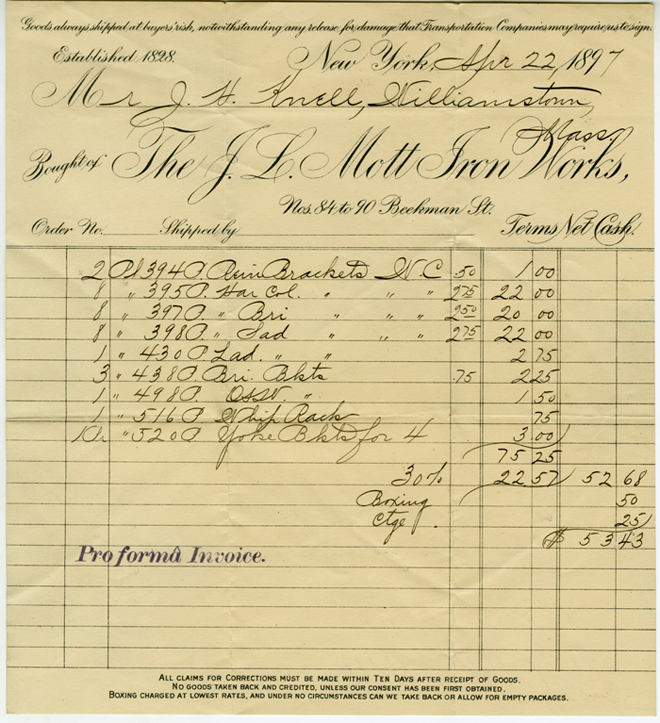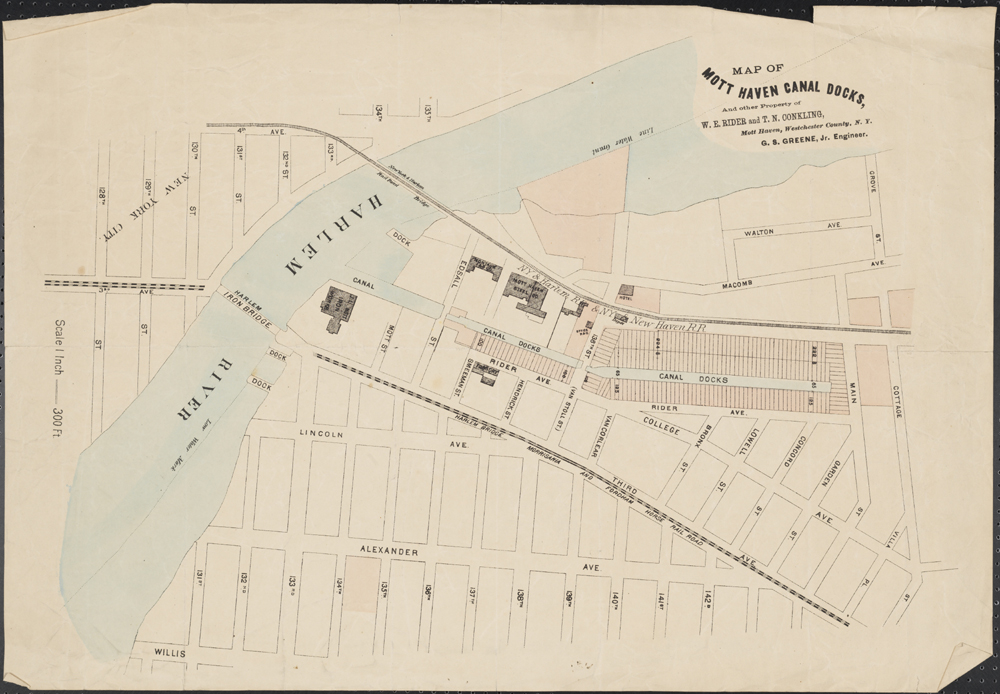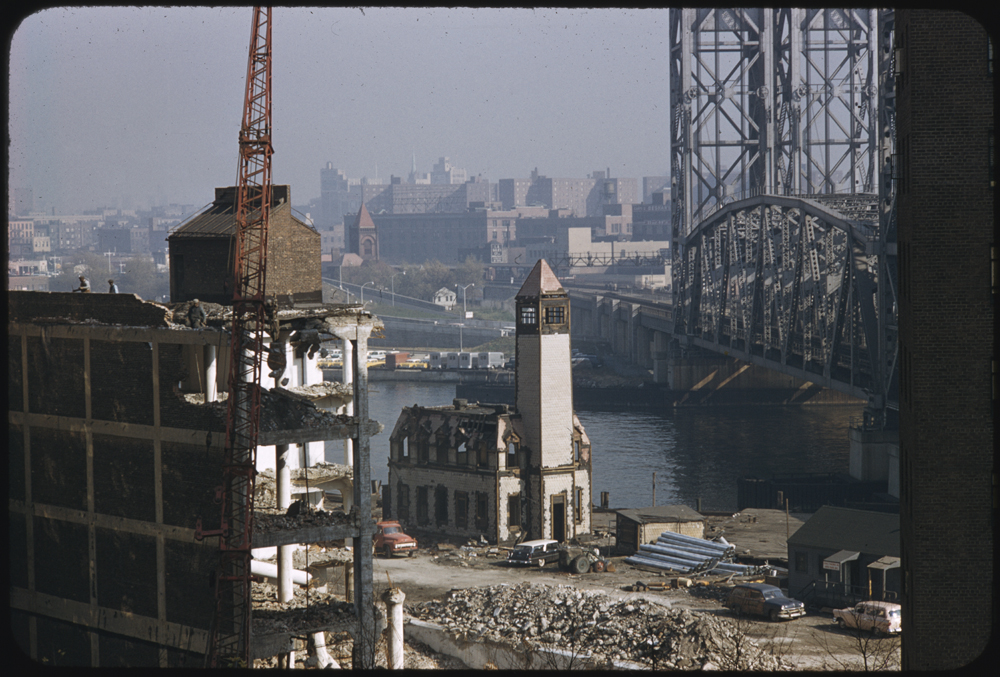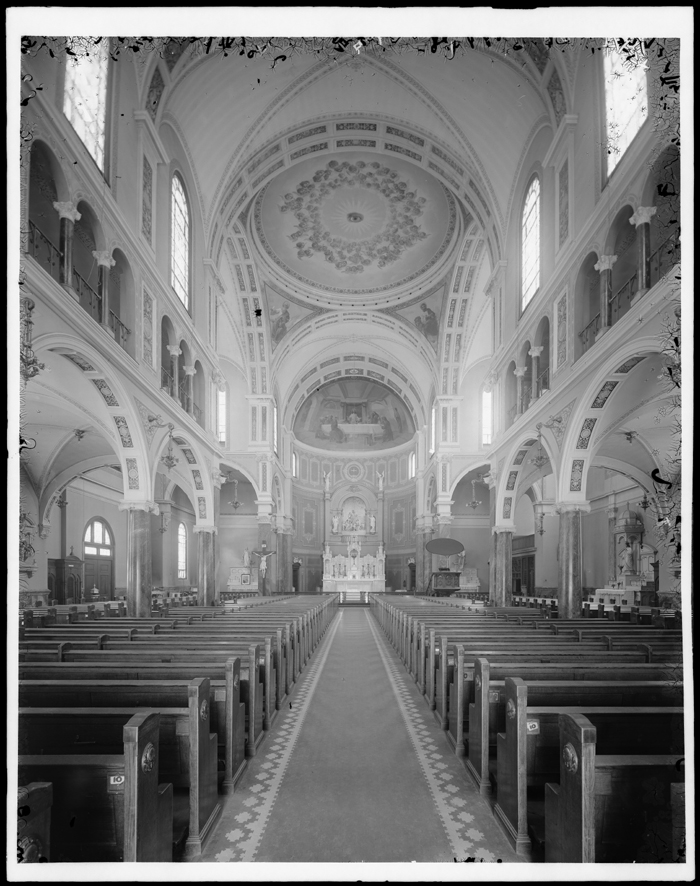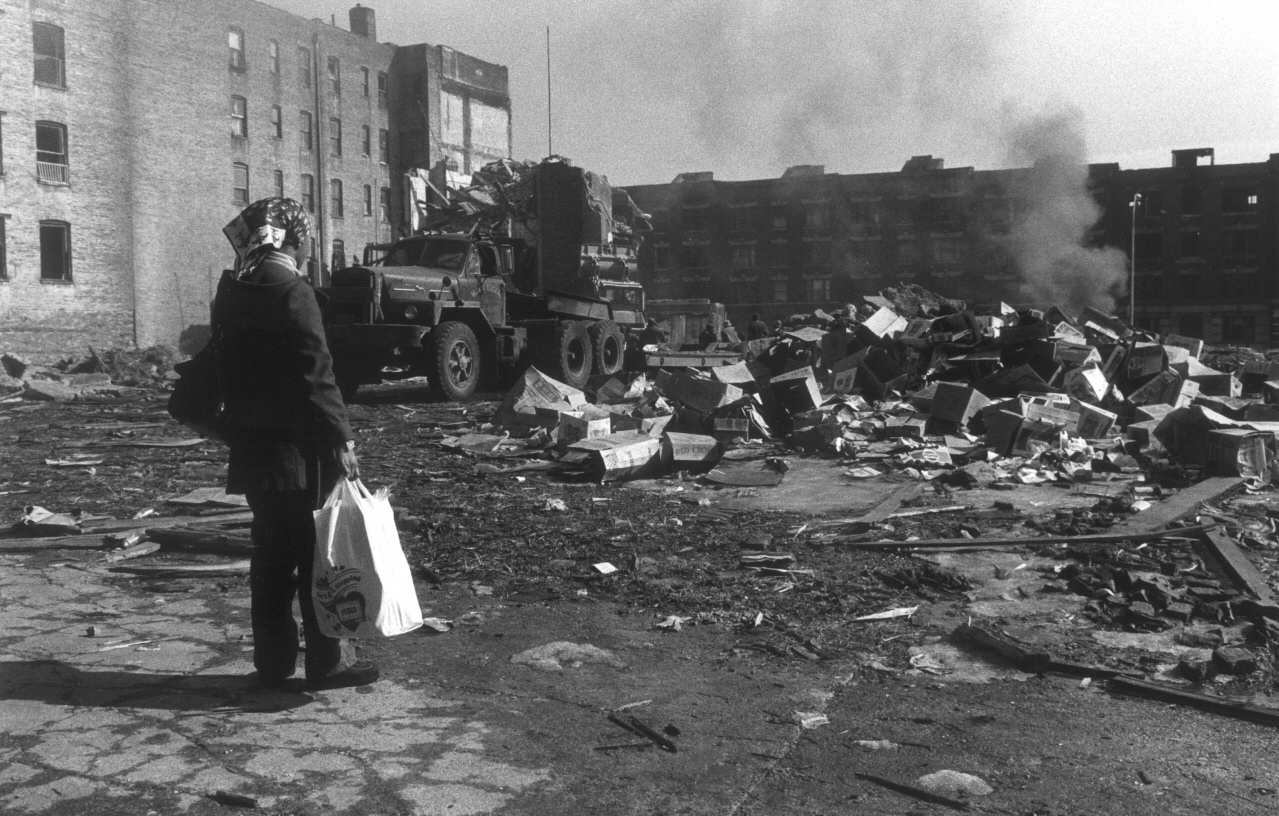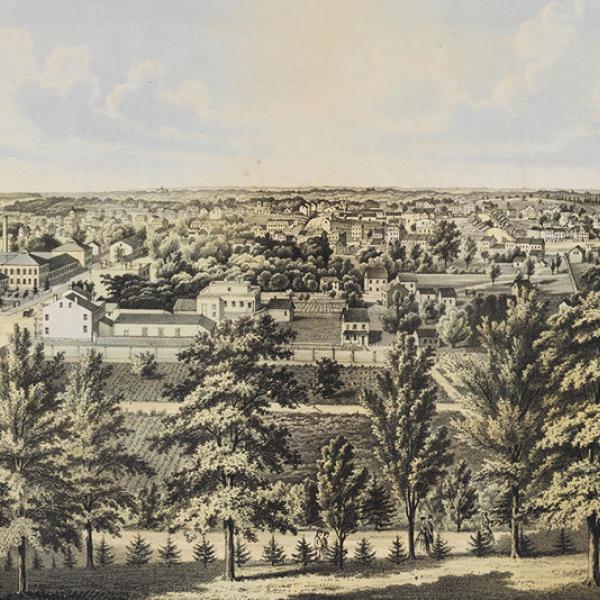Mott Haven Historic District
Tuesday, May 1, 2012 by
The neighborhood of Mott Haven is located in the South Bronx, and is situated on a portion of land historically referred to as Morrisania, named after the powerful Morris family who held possession of it for centuries. Richard and Lewis Morris, merchants from Barbados, purchased the land from Jonas Bronck in 1670. Alexander Avenue, which extends through the heart of the Mott Haven Historic District, is reputed to have been named after Alexander Bathgate, the overseer of the Morris manor.
In 1828, Jordan L. Mott, an inventor and industrialist, purchased land from the Morris family to establish a foundry for his ironworks on the Harlem River at 134th Street. By the 1840s he’d purchased a second tract of land with the idea of building the village of Mott Haven. By 1850, Mott had drawn up plans for the lower part of the Mott Haven Canal, which, once completed, allowed canal boats to travel as far north as 138th Street.
Mott was viewed with a certain amount of resentment, as his ironworks and canal were the forerunners of a wave of unwelcome industrialization through what had previously been pastoral countryside. If you look along the canal in the map above, you’ll see the Mott Ironworks located where the canal meets the Harlem River, and several other industrial buildings as you move up the canal. The neighborhood that forms the Mott Haven Historic District is a residential pocket in the greater industrial neighborhood of Mott Haven, contributing to it’s uniqueness.
The Mott Haven Historic District is roughly situated along Alexander Avenue, bounded by East 137th Street to the south, and East 141st Street to the north. This stretch has been known throughout its history both as “The Irish Fifth Avenue” and “Politician’s Row.” The Mott Haven Historical District was the first area in the Bronx to receive the designation from the New York City Landmarks Preservation Commission, in 1969, shortly following the first historic district designation in 1965 of Brooklyn Heights. Following the construction of major highways in the South Bronx in the 1950s, primarily the Cross-Bronx Expressway, the displacement of vast swathes of residents led to poverty and decay in the South Bronx. Images such at the one below, picturing demolition along the Harlem River at the Park Avenue Bridge (just southwest of the Mott Haven Historic District), became commonplace by the 1960s.
Scenes such as the one captured by Rothstein and Bauman illustrate the timeliness of the historic district designation for Mott Haven. Among some of the architectural landmarks in the Mott Haven Historic District is St. Jerome’s Roman Catholic Church, at the corner of Alexander Avenue and 138th Street, pictured to the right. The district also boasts several examples of historic residential architecture from the early 1860s – 1920s, with interiors custom designed for their owners, and important civic structures, including: the Tercera Iglesia Bautista (Third Baptist Church) and its parsonage; the Mott Haven Branch of the Public Library, which was the first public library in the Bronx, and constructed with funds from Andrew Carnegie’s grant; and the 40th Precinct Police Station. While the historical designation of Mott Haven was a step in the right direction for preserving the unique architectural landscape of the South Bronx, no other neighborhoods received the designation until Longwood did, in 1980.
In the decade in between, decay continued to spread through the borough, and numerous building fires sprung up on a daily basis, leading to the coining of the phrase, “The Bronx is burning,” attributed to Howard Cosell as he commented on a fire in the neighborhood surrounding the stadium during a New York Yankees game. The events of the 1970s brought national attention to the South Bronx, including the notice of President Jimmy Carter, and by the early 1980s parts of the borough were beginning to experience an urban renewal. In addition to Longwood, three other neighborhoods received the historic designation in the 1980s, and four in the 1990s.
Click here to view more images of Mott Haven from the collection, including structures which no longer exist, such as the 138th Street Grand Central Railroad Station and the 3rd Avenue “L”.
